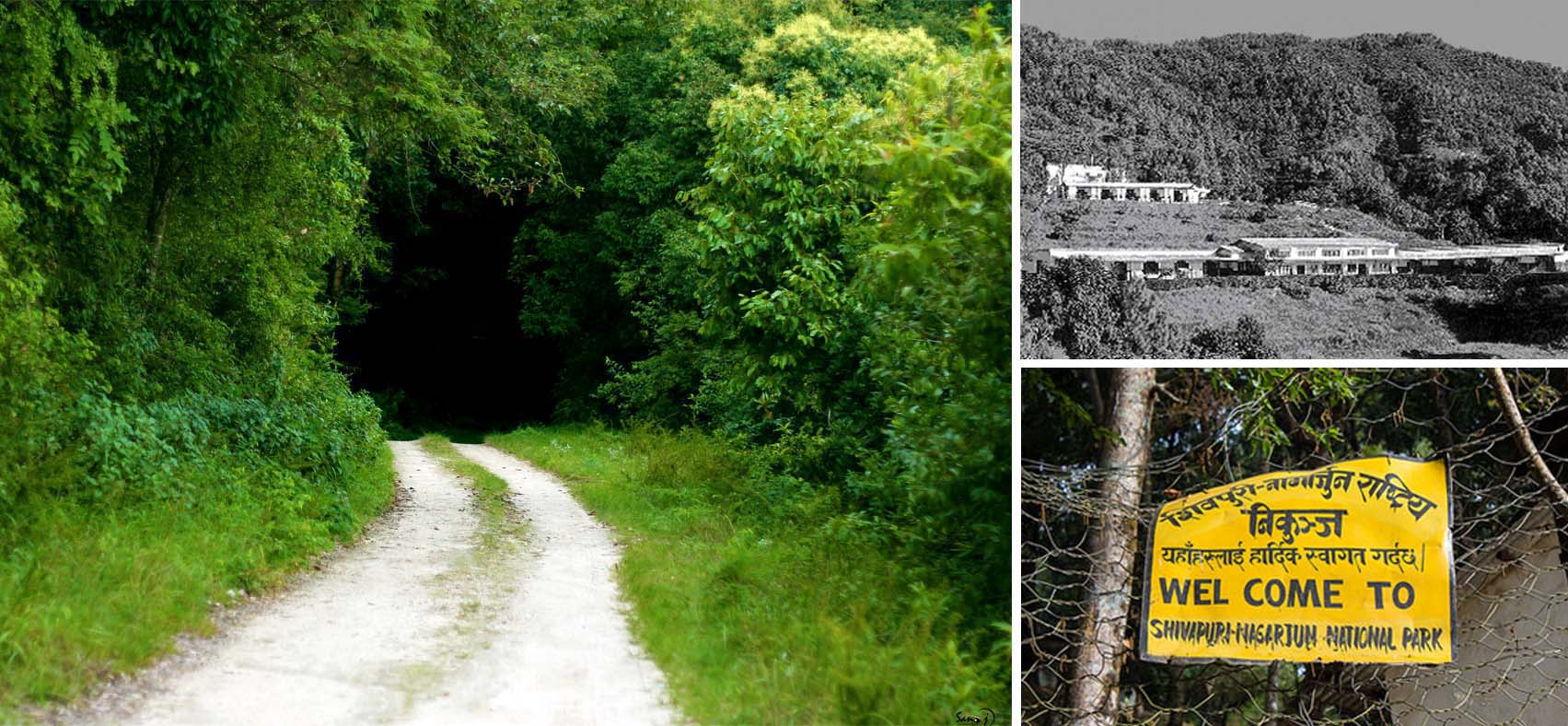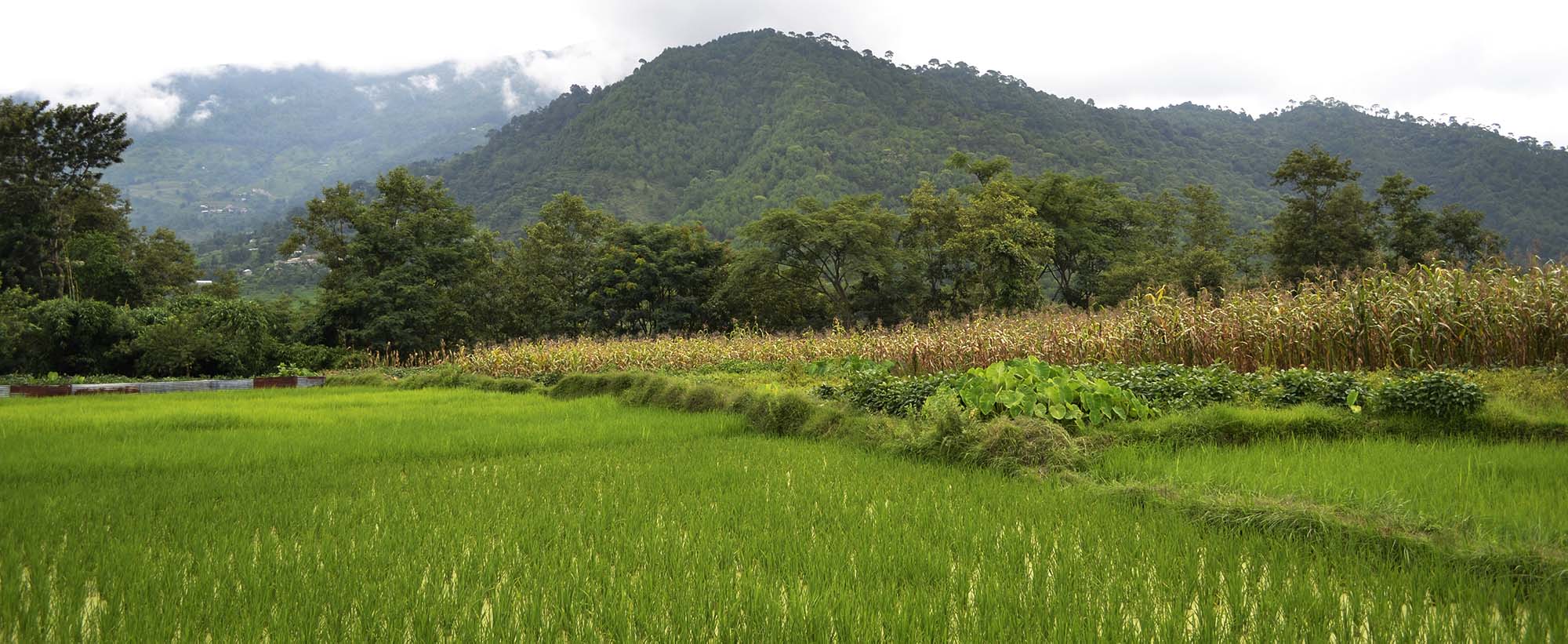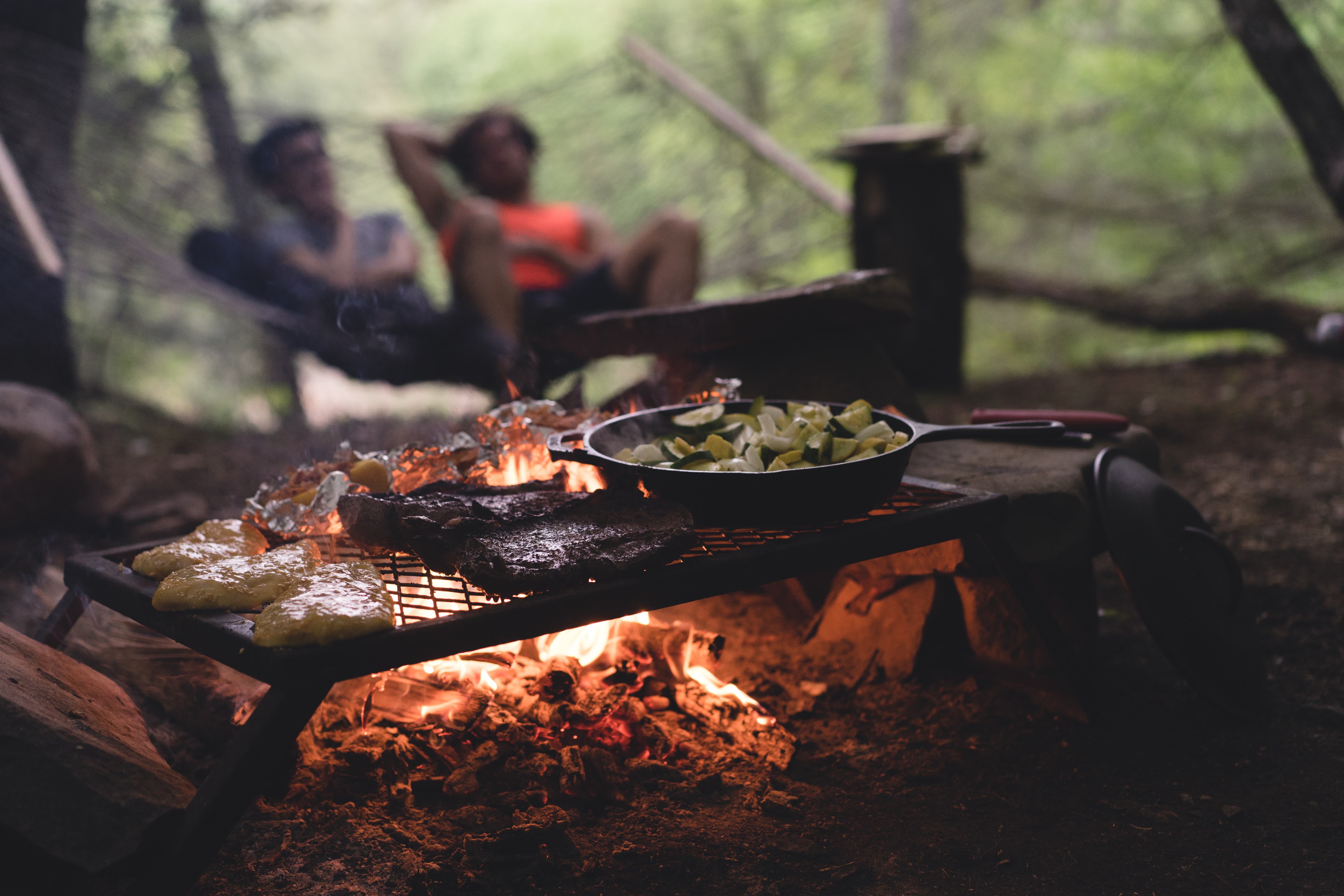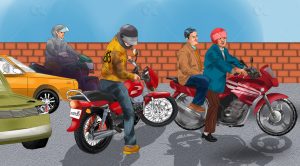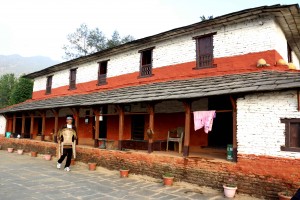It was barely ten minutes before pedestrians were sauntering across the road on which I was driving. Soon kalij pheasants, a pine marten, and a deer were bounding and scuttling across the dappled road. The place had the idyllic and untouched look of a world accessible only through a magical wardrobe. And this was a mere six kilometers from the snarl of Kathmandu’s traffic, just a turn and a loop (so smooth was the ride) from the buzzing Budhanilkantha market.
Crossing the Bishnumati River over a somewhat archaic looking iron bridge was a crossing of a subtle border. Urbanity kept to the other side of the bridge; across it, the place was semi-rustic. The evidence of this was clearest in the careless pedestrians, their nonchalance a hint of the thin traffic their neighborhoods were used to. The women were dressed in traditional Nepali blouses, which is as sure a sign as there is that one is in the countryside. They sat on small courtyards, surrounded by corn probably harvested from their fields.
This, too, was left behind when the road climbed abruptly and wound into a copse of pine. Entering that natural tunnel, it became cool. Below us, a large swath of paddy fields, a sea of eye-pleasing green, lay between the hill and Kathmandu’s rapacious growth—a barrier between the incoming concrete wave. It was a sight that induced a slight chuckle: there were places after all that were out of reach of the city’s tentacles.
(Left to right) Natural tunnel like this inside the Shivapuri national park keeps the visitors cool; Photo: Wikimedia Commons. The campus of Army Command & Staff College photographed during the 1990s. Photo: acsc.mil.np. A sign welcomes visitors to Shivapuri National Park; Photo: Ritesh Man Tamrakar/Flickr. (Opener) A view of the Kathmandu valley from the park: Photo: Wikimedia Commons.
A small sentry post appeared on the road: we were now entering the Shivapuri National Park. Formalities completed and pleasantries exchanged with the soldiers on duty, we continued onward, passing through a semi-dark stretch of road under arching trees to arrive in the meticulously maintained garden of the Army Command & Staff College. It looked more like a princely estate, complete with white Roma stone planters. It could easily have been a place to train people in the lifestyle of royalties.
Then another drastic change in scenery. The paved road ended abruptly, crumbling into a dirt road. It sloped down toward a russet adobe house, wooden struts and tiles, a prayer flag fluttering in the cool breeze. Goats were picnicking all over the place, like a team of gardeners trimming the vegetation. This was Dandagaon, literally “the village on the hill.”
At first sight Dandagaon, a village of the simplest traditional stone and wood houses and a resort and some restaurants, looks like a movie set for an archetypal Nepali village, complete with a forest a stone’s throw away, hills all around, and behind them a panorama of lofty Himalayan peaks; corn fields, narrow steep trails, people milking cows, a cowherd. It’s like arriving (and the feeling is heightened by the proximity to the city) in a rustic utopia. And the loveliness of the place was deeper because of the sweeping view on one side of Kathmandu’s sea of concrete. It’s a place where the pang of loss comes easily, and is easily forgotten.
(Left to right) Large swath of paddy fields lay between the hill and Kathmandu’s rapacious growth—a barrier between the incoming concrete wave. At first sight Dandagaon, a village of the simplest traditional stone and wood houses, looks like a movie set for an archetypal Nepali village. Photos: Kapil Bisht.
The village itself will be forgotten if you take the dirt road going north, a rougher continuation of the paved road. Just around the first bend from there you can catch, on clear days, a glimpse of the mountains you see on old photos of Kathmandu. But there is enough beauty to hold your attention even when the mountains are hidden.
The dirt road winds through dense forest, a dank and shadowy world where the only other color is green. Walking on this road is an instant connection with the wilderness, an immersion in forgotten sounds, a gorging on succulent silence and melodious bird songs. You begin to wonder what it must have been like when Kathmandu was a green valley of sparkling rivers and copses ringing with birdsong.
And you chide yourself and the time you are living in for having exchanged Nature for paved roads, for having distanced yourself from environments that bring you closer to your inner self.
Checklist
To reach Dandagaon is to arrive in a rustic utopia. Photo: Kapil Bisht
Getting There

The journey to Dandagaon is enjoyable no matter what the mode of transportation. There are plenty of routes to get there. If you are on a car or motorbike, the best option is the road that goes west from the Budhanilkantha Temple. From where you turn to go to the temple when coming from the Narayan Gopal Chok, go straight (west). About four meters down this road you will come to a small iron bridge, with a signboard identifying the river as Bishnumati. Turn right after crossing the bridge. Ask locals when you come to an intersection, but you will be climbing all the way to Dandagaon, so don’t take a turn that goes downhill.
If you are on a mountain bike or if you prefer to hike, a better route begins from the old Newar town of Tokha, which is 4 km north from Samakhushi Chok on the Ring Road (this is the same junction from which you go to Grande Hospital). Local buses depart from here for Tokha every 15 minutes or so. At the northern end of Tokha turn right on to the dirt road.
This will culminate at the base of a hill, with a small compound with a couple of simple temples. This is the Chandeshwori Temple. Take the dirt road going up from the northeastern corner of this temple. This dirt road is a wonderful route for mountain bikers. It will test you, though, for it’s a relentless climb. The trail will ultimately merge with the paved road from Budhanilkantha.
Side Trips

Tokha
Although concrete houses have replaced the majority of old Newar style houses here, the little town still has some of the charms of an agrarian community. Wander its alleys, some of which will be filled with the smell of chaku (molasses), a specialty of the town.
Chandeshwori
Its location in a little known corner of the Kathmandu Valley and proximity to a forest gives this temple complex a primeval look. If you are going to Dandagaon via Tokha, it’s well worth investing a couple of minutes walking around this compound of stone sculptures and fearsome Kali statue.
Baudeshwor Mahadev
If you have come as far as Tokha (and if it’s in the monsoon) there is a lovely waterfall and quaint shrine another 4 km down the road from there. This is the Baudeshwor Mahadev shrine. To get there, turn left at the northern end of Tokha, keeping on the paved road. The waterfall is at its biggest and most picturesque in the rainy season.
Precautions and Rules

You will be passing through a national park. There are some sharp bends on the road, making honking almost a necessity. But don’t indulge on the horn like you are on a street in Kathmandu. Besides reducing noise pollution, there is also a selfish motive here: the quieter you are the better chances of seeing wildlife and birds. You will be passing through a dense forest, so it is best to travel in groups. Avoid taking shortcuts or venturing too far away from the main road or trails.
Places to Stay

The most luxurious place to stay in Dandagaon is the Green Valley Resort. There are a couple of cheaper places scattered around the village. These are also the places to get snacks and meals. You might also be able to get some of the locals to cook a simple meal for you for a small fee. For aficionados of local drinks, there is always a steady supply of homemade wine in the village.
***
More destinations near Kathmandu
At Pharping, among myths and miracles
Kakani: Just outside Kathmandu, this village comes to life at night



